Edited my old blog post ear pain
Earache (or Ear pain) in adult and children is one of the most common reasons for visiting ENT specialist and common reason my clinic gets calls on the helpline during Sundays, nights and other emergencies.
The most common cause of ear pain is swelling or infection within the ear itself and diagnosis is simple. However, sometimes the cause is not in the ear, but in remote areas, known as referred earache. Therefore, finding out the cause of referred ear ache is real challenge and requires thorough examination by ENT doctor.
Causes of Ear Pain-
Common causes of earache are Outer ear infection (otitis externa), Middle ear Infection (acute otitis media), eustachian tube blockage and impacted wax.
-
Causes of ear pain within the ear–
- Outer Ear and Ear-canal– Outer ear canal infection (Otitis externa), impacted wax, boil, Herpes Zoster
- Middle ear– Infection (Acute otitis media), Eustachian tube blockage, Glue ear, travel by flight
2. Causes of ear pain outside the ear (Referred Earache)–
- Carious tooth, impacted wisdom tooth
- TMJ (Jaw joint) disorder
- Oral cavity and tongue-ulcers
- Mumps/ Parotitis
- Base of tongue- ulcer, tumor
- Sore throat (Pharyngitis), tonsillitis, after tonsillectomy surgery
- Elongated styloid process stretching nerve
Common reasons and treatment of Ear Pain:
External ear infection (Otitis Externa)– Moisture may be trapped inside the canal while bathing or injury may occur in the skin of the ear canal while using ear buds to clean the ear. Consequently outer ear and ear canal infection develops. Further, it may lead to fungal infection of the skin of outer ear.
Ear pain of otitis externa worsens on touching the ear and there may be swelling of the ear and blocked ear feeling.
Treatment – Outer ear infection is treated with combination antibiotic and steroid ear drops for 7-10 days.
If ear swelling is severe a wick/ear dressing soaked with ear drops or ointment is placed in the canal. Oral antibiotics and analgesics are prescribed.
Furthermore if pus accumulates, incision and drainage may be required.
Impacted wax and foreign bodies– Ear wax is not a disease rather it makes a protective layer in the ear canal. It may be a reason of ear pain; also attempts to clean the wax at home may hurt the skin, as a result ear infection develops.
Removal of Impacted ear wax causing obstruction and ear foreign bodies is done by an ENT Specialist by instruments or syringing.
If wax is hard then wax-softening ear drops may be prescribed for 5-7 days and ear cleaning is done after wax becomes soft.
Eustachian-tube block and glue ear– Eustachian tube connects the middle ear with the nasopharynx. It helps with ventilation of the middle ear and drainage of fluid from the middle ear.
Cold, allergy, sinusitis, adenoids or sore throat may cause blockage of the tube therefore resulting in ear pain.
Tube blockage creates negative pressure in the middle ear, which in turn leads to fluid accumulation in the middle ear (Glue ear). Subsequently, increasing pressure in the middle ear may cause pain in the ear.
Treatment of Eustachian tube blockage is oral decongestants and nasal drops. Antibiotics may be given for glue ear.
If the fluid persists for more than 3 months, then a tiny tube (Grommet) may be placed into ear drum.
Otitis media– Otitis media is infection of middle ear which often spreads from cold, flu, sore throat or allergy.
Treatment -Visit to an ENT clinic is required for proper diagnosis and suitable antibiotics prescription by an ENT doctor. Additionally pain killer, oral or nasal decongestants and antibiotic ear drops may be advised.
Home remedies for ear pain-
- You can apply a cold pack or warm compresses to the ear to reduce pain.
- Some safe over the counter pain-relievers can be used to ease the ear pain.
- Do not use ear buds/q tips to clean the ear.
- Avoid putting oil, water or any other thing in the ear
Earache may be because of a myriad of reasons. Most common causes are impacted, wax, minor injury while ear cleaning, Eustachian tube blockage and ear infection due to cold.
If Ear pain is severe, continuous or associated with hearing problem, dizziness, headache, fever or is simply unexplainable you should visit your ENT specialist for timely treatment.
What to do if you have piercing /shooting ear Pain? —Contact ENT clinic, Vashi, Navi Mumbai

 Bulls lamp placed above and behind the patient’s shoulder has got a bulb and Plano-convex lens to send focused light to head mirror.
Bulls lamp placed above and behind the patient’s shoulder has got a bulb and Plano-convex lens to send focused light to head mirror.

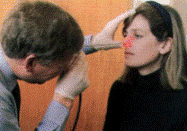 light source, camera and nasal endoscope are being used in a modern
light source, camera and nasal endoscope are being used in a modern 
 Help in viewing inside of nose, procedure to inspect nasal cavity is called anterior rhinoscopy.
Help in viewing inside of nose, procedure to inspect nasal cavity is called anterior rhinoscopy. Used to examine larynx and laryngo-pharynx. Doctor will hold your tongue and will see reflection of larynx in the mirror that is why it is called indirect laryngoscopy.
Used to examine larynx and laryngo-pharynx. Doctor will hold your tongue and will see reflection of larynx in the mirror that is why it is called indirect laryngoscopy.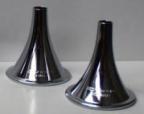 Inserted into ear to see inside of ear canal and ear drum.
Inserted into ear to see inside of ear canal and ear drum.
 Otoscope is most essential tool in the hands of otolaryngologist; I often use it to inspect ear, nose and throat of infant, child or bed-ridden patients or places (like rural-camps) where an equipped E.N.T. set-up is not present.
Otoscope is most essential tool in the hands of otolaryngologist; I often use it to inspect ear, nose and throat of infant, child or bed-ridden patients or places (like rural-camps) where an equipped E.N.T. set-up is not present.  I call it “chhoti jadu ki chhadi” (tiny magic-stick). On the one end of the probe cotton can be applied and used to clean ears of any discharge. Other end has got ring like structure to remove wax, dried secretion and foreign body.
I call it “chhoti jadu ki chhadi” (tiny magic-stick). On the one end of the probe cotton can be applied and used to clean ears of any discharge. Other end has got ring like structure to remove wax, dried secretion and foreign body.
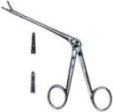 (Tilley’s or Hartman’s) for packing or grasping.
(Tilley’s or Hartman’s) for packing or grasping. 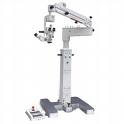 To examine the ear drum more precisely under magnification, a procedure called Examination under microscope (EUM).
To examine the ear drum more precisely under magnification, a procedure called Examination under microscope (EUM).  To roughly assess degree and type of hearing impairment.
To roughly assess degree and type of hearing impairment.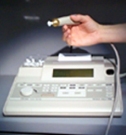
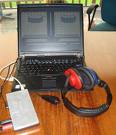
You must be logged in to post a comment.